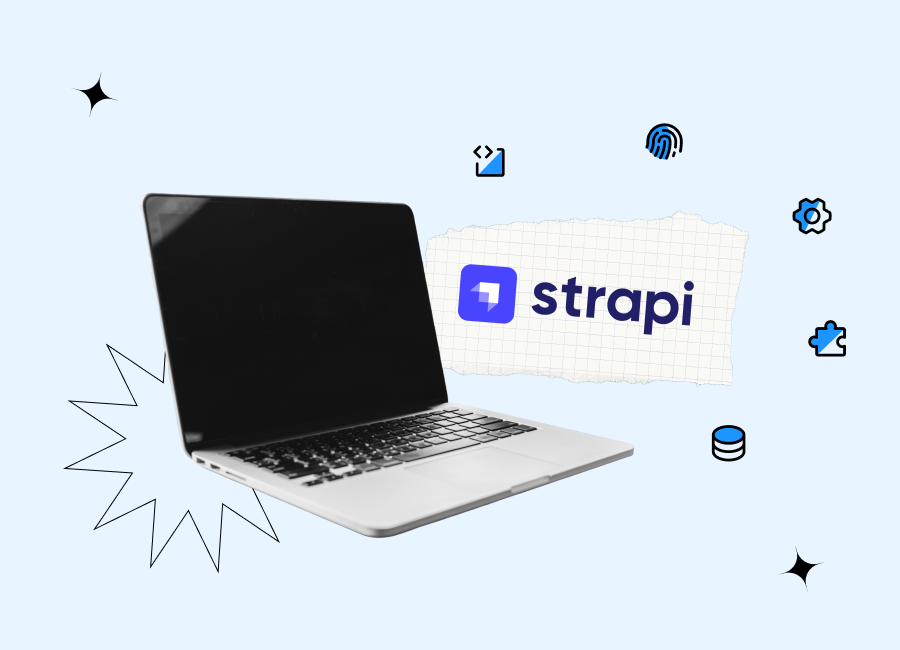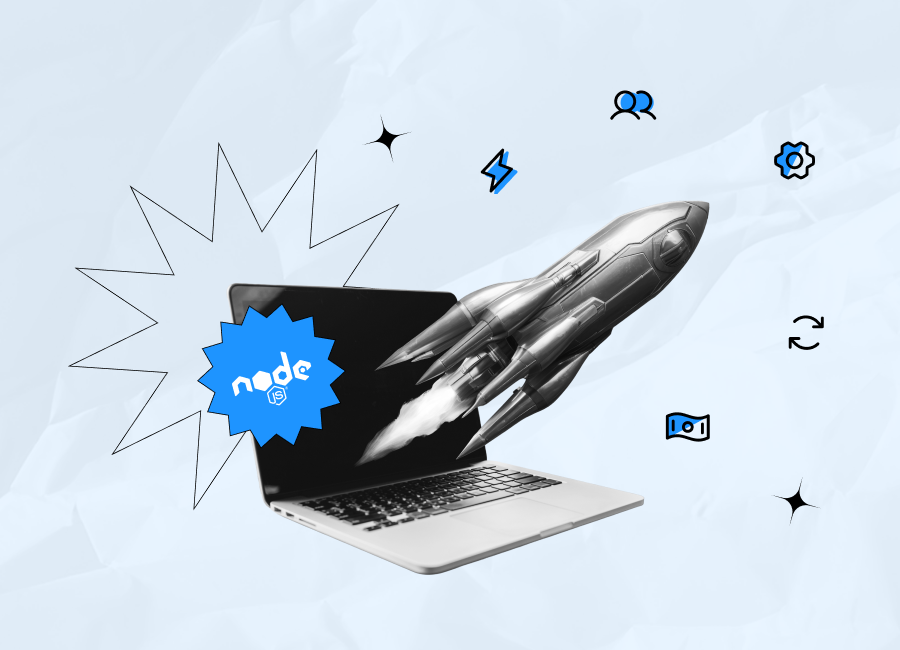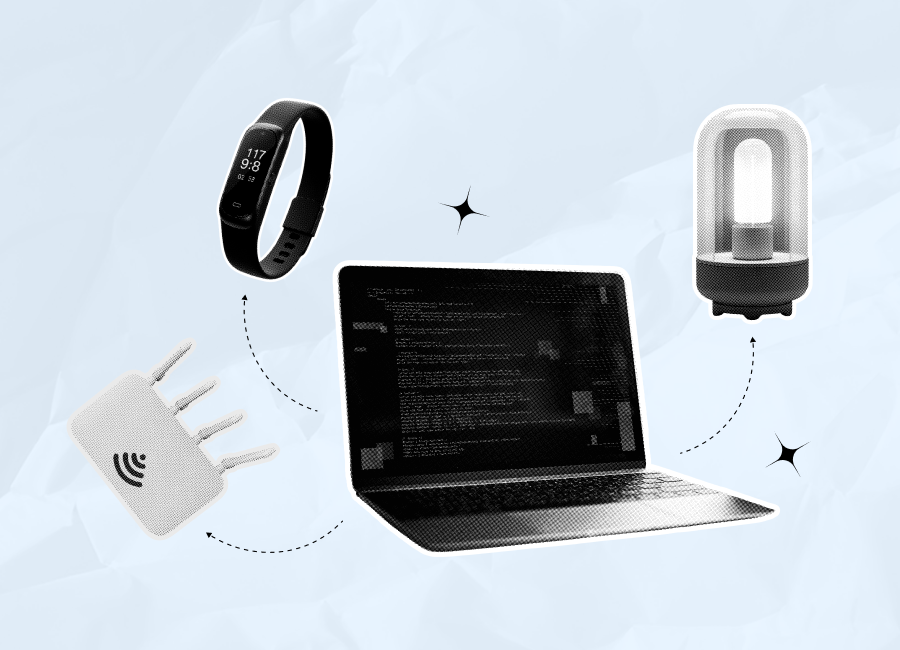In 2022, the rate of global smartphone penetration hit the 68% mark, with some countries in North America and Europe achieving around 80%. We are now accustomed to fulfilling multiple everyday and business tasks with the help of our mobile devices. It’s difficult for us to imagine that just a few years ago most of these daily activities were carried out in a completely different way.
Thanks to the growing penetration of smartphones worldwide, the demand for custom mobile app development services continues to climb. If you are already planning to launch your own mobile solution for the needs of your employees or customers, we recommend reading further. In this blog post, we’ll explain the peculiarities of each stage of the mobile app development life cycle.
Of course, companies’ approaches to creating mobile software products may differ, as will the time required for the development process. Developing an MVP (minimum viable product) — the first version of an app, designed with a limited set of features simply for evaluating the feasibility of the idea — can take around 2 months. All other time frames are greatly influenced by the client’s specific needs and the project’s complexity.
Approaches to mobile app development
Before discussing all the stages of the mobile app development life cycle, let’s take a look at approaches to software development in general. There are two key methodologies, called Waterfall and Agile. Each has its strong and weak sides, but they’re mainly different in how the process of building a solution is organized.

Waterfall
Waterfall follows a linear process, where tasks are carried out one by one. The development team moves from one stage to another, and the next step can’t start before the previous one is completed. This approach is usually used when projects have very precise requirements. The team prepares full documentation at the very beginning of the project realization and can set clear deadlines and milestones, which makes the process very simple to understand for all stakeholders. However, it can be very challenging to introduce any changes after development has started.
Advantages of the Waterfall methodology:
- A clear structure of the application development life cycle;
- Smooth distribution of all the project-related information among the team members;
- Simplicity of project management;
- Determination of goals at the earliest stages;
- High stability;
- The possibility to predict when your app will be available on the app store.
Disadvantages of the Waterfall methodology:
- High operational costs;
- No focus on end-users or clients;
- No testing until the final stages of the application development life cycle;
- Lack of flexibility;
- Difficulties in introducing changes to the project.
Agile
Agile is an iterative approach. In this methodology, the project is broken down into time-boxed phases (sprints) that are aimed at continuous improvement. Within the framework of each sprint, the team develops a small part of the product, tests it, gets feedback from the client, and can enhance the built part. This approach greatly relies on communication and collaboration within teams that are working together on the project. The great benefit of Agile is that it allows teams to stay flexible and easily introduce required changes.
Advantages of the Agile methodology:
- Simplicity of introducing changes and updates after the start of the development project;
- Close interaction with customers at all stages of the development project;
- Full focus on the needs of end-users the dynamic business requirements;
- The possibility to detect bugs after each sprint and address them timely;
- Great flexibility.
Disadvantages of the Agile methodology:
- No strict deadlines;
- The necessity to have specific knowledge to rely on this methodology for your project realization;
- No possibility to use it for small projects.
Key stages of the mobile app development life cycle
When thinking about mobile app creation, you must understand that a solution must be carefully thought out, well-designed, skillfully developed, attentively tested, and regularly updated to be successful. To ensure all of this, there is a separate stage in a mobile app development life cycle.
Stage 1. Discovery phase
This stage, also known as the business analysis phase, is typically devoted to gathering and analyzing information about the project. The development team needs to collect as much detail as possible and make sure each point is clear and well-understood. The discovery phase involves close interaction and communication between the client and the development team, in the form of workshops. This allows the team to learn more about the client’s expectations, to study potential risks and figure out the most effective ways to avoid those risks.
Based on all the gathered and analyzed information, the team will prepare the required documentation and set out tech specifications necessary for estimating the project costs and timeline.
This is only the first stage of the development process, but it plays a vital role in the whole project. To effectively perform all the tasks required, the team at this stage should include a business analyst, a developer, a UI/UX designer, and a project manager.
On average, this stage lasts for 2-6 weeks. For some small projects, 1-3 days may be enough.
Stage 2. Design
This is an important phase of any mobile app development life cycle and involves deciding on your app's look and feel. After getting the requirements from the team, designers will carry out the following tasks:

- Wireframing. Wireframes can be described as black-and-white models of each interface. Though no colors or relevant content are used, wireframes look like a practically ready design. Before preparing them, designers can make sketches for presenting the general concept of the app.
- Design. When the wireframes are fully ready and approved by clients, designers proceed to the main part of their work. The result will be pixel-perfect designs of all the interfaces of the future solution.
- Prototyping. Prototypes are clickable models of screens. They allow stakeholders to evaluate not only how the app looks but also how the interaction with it will be organized from a visual perspective. All this will be available despite the fact that there is no backend side at this stage.
The time required for the UX and UI design stage depends on multiple factors, including the size of your app and the complexity of a user interface. On average, UX/UI design takes 6-7 weeks. For smaller apps, this period will be shorter (2-3 weeks), while for big projects, designers may need around 9-10 weeks.
Stage 3. Development
Now, when the user interface is designed, engineers and other tech experts come into play. This will be the core stage of the app development process. There is a lot of coding work, which includes not only developing various features from scratch but also integrating third-party components and services.
It is the most time-consuming stage. Based on our experience, we can say that typically it lasts for 3-4 months. However, if you have a feature-rich app with numerous integrations, more time will be required.
Stage 4. Quality Assurance
A good development team always understands the importance of proper testing and bug fixing. This stage, if smartly organized and conducted, helps eliminate up to 90% of potential risks users may face in the future. As a rule, several types of manual and automatic tests are applied. Some are conducted in parallel with the development stage, which is important for ensuring a high-quality result. When everything is ready, the team needs to perform regression testing, which includes re-running functional and non-functional tests. This step is necessary to ensure that, after implementing all the required changes, the software works as it is supposed to.
It is rather difficult to name any exact time periods that are required for QA processes as modern approaches to software development typically presuppose that testing is conducted simultaneously with coding. But after the development is over, your team may need around 2 weeks more to finish testing.
Stage 5. Release
When all active stages of the development process are over, and your product is tested and ready to be presented to the target audience, it is published on the app store. Once posted in online stores, it will be available to a wide circle of potential users.
Finalization and launch can take nearly a week if everything goes smoothly.
Stage 6. Support and maintenance
It is quite important to regularly monitor the performance of your application even when it is already made available on the app store, so in a timely way you can detect any issues that affect its functionality and productivity. It’s highly recommended that you always have specialists on hand, ready to react to any unpredictable problems with your app, such as downtimes or technical glitches.
If you want your application to keep attracting new users and satisfy the needs of the existing ones, you should never stop working on it. It’s best to regularly gather users’ feedback and analyze their behavior to learn what can be improved and what features can be added to meet the expectations of your target audience.
Are you planning to launch a custom mobile app?
Our seasoned developers will find the best approaches to creating your solution in full accordance with your needs and requirements.
Conclusion
The success of your mobile software project depends not only on its quality but also on how you organize the application development process. Your development team should clearly understand the goals of each stage and the tasks involved. Omitting even small steps can pose a threat to the entire project. That’s why you must be attentive to selecting the specialists who will be responsible for creating your custom solution.
At Cogniteq, we have a deep understanding of all the specifics of the mobile app development life cycle and will be happy to help you to transform your ideas into advanced, feature-rich mobile applications. Just contact us via our website and let us know whether you have any questions or want to learn more about what we offer.
FAQ
What is the mobile development life cycle?
The mobile development life cycle is a term that describes the entire app development process. It includes all the steps a development team performs to create a fully functioning mobile solution based on the initial concept and the requirements provided by a customer or product owner.
What are the phases of the mobile development life cycle?
There are various approaches to defining phases of the mobile development life cycle. The most common approach includes 6 key stages: Discovery, Design, Development, Quality Assurance, Release, and Maintenance.
How long does the mobile app development life cycle typically take?
The time needed for app development depends on the complexity of the solution, specific requirements, and the size of the hired team. On average, it takes around 4-6 months. But if you’re planning to build a mobile app, we recommend getting a consultation with a development team that will estimate your project costs and the time needed for its realization.










































